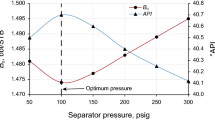Abstract
The block X is an integrated upstream and downstream development, comprising the development of oil fields and the construction and operation of pipelines and a refinery [1]. The upstream development consists of 73 fault blocks scattered in nine oil fields, in which four blocks are already in development, and the others will be under full development in the near future. The development strategies need to meet the strategic goal of maximizing the length of the stable production plateau for three production scenarios (low, base, and high) while fulfilling the objectives of maximizing the integrated economic value (NPV), fast recovery of the investment, and minimizing risks. To model the development strategy [2, 3], first, a single well economic case for each development block is created, and total production volume at economic limit is generated. It is then followed by the screening process to filter out the uneconomical blocks which do not meet the hurdle rate for the single well economic limit production volume. The economics results for each block passing the screening process are then brought into Merak Capital planning as the base for the optimization. The optimization is set up to generate three strategies which determine the onstream time options for each of the block development to meet the three strategic production plateau goals and fulfill the objectives. The business rules modeled in Merak Capital Planning [4−6,5,] represent the dependency between the onstream time and the commissioning date of the export pipelines, the completion time of the surface facilities, the size and quality of the blocks, and the distance of the block to CPF, as well as the processing capacity of the refinery. The optimization is done by using both the Lindo and Genetic Algorithm methods. For each strategy, multiple options are generated from the optimization. Based on the optimization outcomes, full life cycle economic evaluation is performed to assess integrated upstream–downstream economic value [7] of the multiple development options for each strategy. Finally, the optimal development option for each strategy to meet the company’s strategic goals is determined based on the integrated economic results of the optimized development options [8−10,9,].
Copyright 2018, Shaanxi Petroleum Society.
This paper was prepared for presentation at the 2018 International Field Exploration and Development Conference in Xi’an, China, September 18-20, 2018.
This paper was selected for presentation by the IFEDC Committee following review of information contained in an abstract submitted by the author(s). Contents of the paper, as presented, have not been reviewed by the IFEDC Committee and are subject to correction by the author(s). The material does not necessarily reflect any position of the IFEDC Committee, its members. Papers presented at the Conference are subject to publication review by Professional Committee of Petroleum Engineering of Shaanxi Petroleum Society. Electronic reproduction, distribution, or storage of any part of this paper for commercial purposes without the written consent of Shaanxi Petroleum Society are prohibited. Permission to reproduce in print is restricted to an abstract of not more than 300 words; illustrations may not be copied. The abstract must contain conspicuous acknowledgment of IFEDC. Contact email: paper@ifedc.org.
Access this chapter
Tax calculation will be finalised at checkout
Purchases are for personal use only
Similar content being viewed by others
References
Perez F, Tillero E, et al. An innovative integrated asset modeling for an offshore-onshore field development: Tomoporo field case. In: spe international production and operations conference and exhibition, Doha, Qatar, 14–16 May 2012, SPE 157556.
Howell JI III, Tyler PA. Using portfolio analysis to develop corporate strategy. In: SPE hydrocarbon economics and evaluation symposium, Dallas, Texas, 2–3 April 2001, SPE 68576.
Back M, Kirk G. An integrated portfolio management approach for more effective business planning. In: SPE hydrocarbon, economics, and evaluation symposium, Calgary, Alberta, 24–25 Sep 2012, SPE 162748.
Back MJ, Guercio C. Portfolio management for strategy planning and operational optimization. In: 2010 SPE annual technical conference and exhibition, Florence, Italy, 20–22 Sep 2010.
Willigers BJA, Majou F. Creating efficient portfolios that match competing corporate strategies. In: SPE hydrocarbon economics and evaluation symposium, Dallas, Texas, 8–9 Mar 2010, SPE 129259.
Tonnsen RR. Application of the efficient frontier concept to resource play budget evaluation and portfolio optimization. In: 2008 SPE annual technical conference and exhibition, Denver, Colorado, 21–24 Sep 2008, SPE 116681.
Reinsvold C, Johnson E, Menke M. Seeing the forest as well as the trees: creating value with portfolio optimization. In: 2008 SPE annual technical conference and exhibition, Denver, Colorado, 21–24 Sep 2008, SPE 116419.
Faya LC, Lake LW, Lasdon LS. Beyond portfolio optimization. In: 2007 SPE hydrocarbon economics and evaluation symposium, Dallas, Texas, 1–3 April 2007, SPE 107709.
Lessard RW. Portfolio optimization techniques for the energy industry. In: 2003 SPE hydrocarbon economics and evaluation symposium, Dallas, Texas, 5–8 April 2003, SPE 82012.
Campbell JM, Bratvold RB, Begg SH. Portfolio optimization: living up to expectations? In: 2003 SPE hydrocarbon economics and evaluation symposium, Dallas, Texas, 5–8 April 2003, SPE 82005.
Acknowledgements
We would like to thank our company CNPC for supporting us on this paper and allowing us to attend the 2018IFEDC. We would also like to express our gratitude to all of those who helped us during the writing of this paper.
Author information
Authors and Affiliations
Corresponding author
Editor information
Editors and Affiliations
Rights and permissions
Copyright information
© 2020 Springer Nature Singapore Pte Ltd.
About this paper
Cite this paper
Wang, Z., Fa, G., Jiang, W., Lan, J., Zhao, B. (2020). Optimizing the Development Strategy for the Block Faulted Oil field with Merak Capital Planning. In: Lin, J. (eds) Proceedings of the International Field Exploration and Development Conference 2018. IFEDC 2018. Springer Series in Geomechanics and Geoengineering. Springer, Singapore. https://doi.org/10.1007/978-981-13-7127-1_61
Download citation
DOI: https://doi.org/10.1007/978-981-13-7127-1_61
Published:
Publisher Name: Springer, Singapore
Print ISBN: 978-981-13-7126-4
Online ISBN: 978-981-13-7127-1
eBook Packages: EngineeringEngineering (R0)




